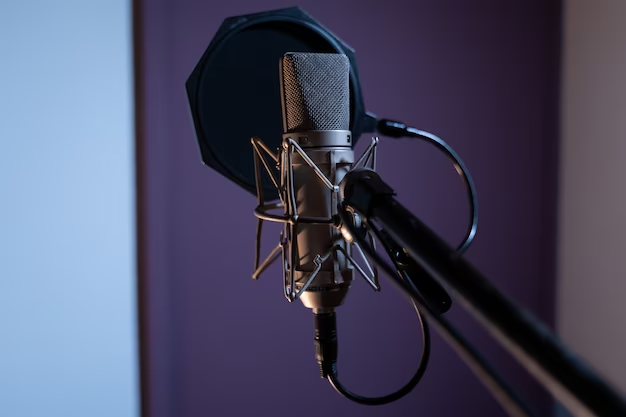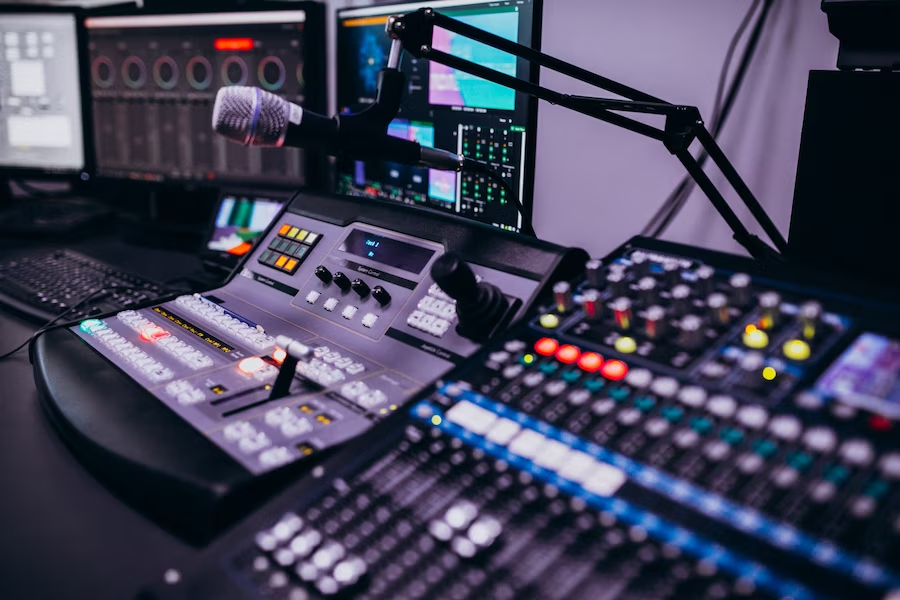Microphones play a crucial role in facilitating live vocal performances by serving as the medium through which the performer’s voice is transmitted to the audience’s auditory perception. However, optimizing the audio quality produced by a microphone entails more than simply vocalizing into it. In this discourse, we shall undertake a comprehensive exploration of vocal microphone techniques employed during live performances.
The Foundation of Sound – Understanding Microphone Types
Different types of microphones are designed for different tasks. Understanding these types and their typical applications can help you choose the right microphone for your performance:
- Dynamic Microphones: Known for their durability and robustness, dynamic microphones are often seen on live stages. They can handle high sound pressure levels and are generally less sensitive to subtle frequencies than condenser microphones;
- Condenser Microphones: Offering excellent sensitivity to sound, condenser microphones capture vocals with accuracy and detail. However, they require a power supply (usually phantom power from a mixing console) and are more delicate than dynamic microphones;
- Ribbon Microphones: Ribbon microphones are delicate and often used in studio settings for their rich, warm sound. They’re not usually recommended for live performances due to their fragility.
Microphone Polar Patterns
Understanding polar patterns is key to getting the best sound from your microphone. Here’s a look at the most common types:
- Cardioid: This pattern captures sound in front of the microphone and rejects it from the back and sides. It’s an ideal choice for live vocal performances because it offers some ambient noise rejection;
- Supercardioid and Hypercardioid: These are tighter versions of the cardioid pattern, offering even more sound rejection from the sides, but picking up a bit more sound from the rear;
- Omnidirectional: These microphones capture sound from all directions. They’re not typically used in live vocal performances due to their tendency to pick up all ambient noise;
- Figure-8 or Bidirectional: Bidirectional microphones pick up sound equally from the front and back, rejecting sounds from the sides. They’re often used in scenarios where two performers are facing each other.
Effective Vocal Microphone Techniques
Next, we turn our attention to the key techniques that will dramatically affect the quality of your vocal performance:
Proximity Effect and Handling Noise
When you sing or speak very closely into a microphone, particularly a cardioid one, the microphone boosts the bass frequencies, a phenomenon known as the proximity effect. This can be used creatively to add richness and depth to your voice. However, it’s crucial to remember that too much of this effect can cause your vocals to sound boomy or muddy.
Moreover, when you hold the microphone in your hands, you need to consider handling noise, which is the noise made when you move your hand along the microphone body. This can be distracting, and the key to minimizing this is to maintain a relaxed grip and make minimal movements while performing.
Microphone Positioning
The way you position your microphone relative to your mouth can greatly influence the sound:
- Direct On: Singing directly into the microphone offers the most gain before feedback but can potentially lead to issues with plosives (sharp ‘P’ and ‘B’ sounds that can cause a pop in the audio);
- Angled: Singing into the microphone at an angle can help reduce plosive issues but might affect the frequency response and the gain before feedback;
- Off-Axis: Singing across the microphone, not directly into it, can minimize issues with plosives and sibilance (exaggerated ‘S’ sounds), but this can also significantly impact the frequency response.
Microphone Distance
The distance between the microphone and your mouth also plays a significant role:
- Close Miking: Holding the microphone very close to your mouth provides maximum volume and bass boost due to the proximity effect. It also helps to reject ambient noise;
- Distance Miking: Holding the microphone further away captures more of the overall sound of your voice and less of the direct sound. However, it can also pick up more ambient noise.
Other Considerations

Apart from the above techniques, there are other considerations to keep in mind during live performances:
- Pop Filters: Pop filters can help reduce plosive sounds. While more common in studio settings, they can also be used in live performances;
- Mic Stands: Mic stands can help reduce handling noise, as they hold the microphone steady during the performance;
- Windscreens: Outdoor performances can be affected by wind noise. Using a windscreen over the microphone can help to reduce this.
Preparing for the Performance

A successful performance is built upon thorough preparation, involving several vital steps. These steps, which encompass soundcheck, monitor setup, and rehearsal, are crucial for ensuring a flawless and captivating performance.
- Soundcheck: The soundcheck phase is the initial step to fine-tune the audio aspects of your performance. This is the opportune time to adjust levels, equalization (EQ), and other audio settings to ensure that your voice and instruments are balanced and sound clear. During the soundcheck, make sure to get comfortable with your microphone and familiarize yourself with the stage layout. This will help you feel at ease during the actual performance and prevent any last-minute surprises;
- Monitor Setup: Monitors play a pivotal role in allowing you to hear your performance just as the audience does. Properly setting up the monitors ensures that you can hear your voice and instruments clearly on stage, reducing the chances of struggling to stay in sync with the music. Take time to position the monitors effectively, ensuring they provide optimal sound coverage without causing feedback issues;
- Rehearse: The old adage “practice makes perfect” holds true for microphone techniques as well. Regular rehearsal and practice sessions are essential to refine your microphone technique, allowing you to develop a natural and confident stage presence. The more you practice using the microphone, the better you will become at controlling your voice’s projection, handling plosives, and maintaining consistent distance from the mic. Additionally, rehearsals offer an opportunity to fine-tune your overall performance, such as stage movements, interaction with the audience, and the timing of your delivery.
Conclusion
Performers can greatly enhance their live vocal performances by acquiring knowledge of the technical aspects of microphones and implementing appropriate techniques. These techniques provide enhanced command over the auditory output, diminish undesired noise, and ultimately engender a more pleasurable experience for the spectators.
FAQ
Feedback occurs when the microphone picks up its own output from a speaker. Using a cardioid microphone, careful speaker, and monitor placement, and employing a graphic EQ to notch out the problematic frequency can help.
Use the proximity effect to your advantage by singing closer to the microphone to boost the low frequencies, adding warmth and fullness to your voice.
This is likely due to the proximity effect. When you sing too closely to the microphone, particularly a cardioid one, it boosts the bass frequencies, which can cause distortion if too pronounced.